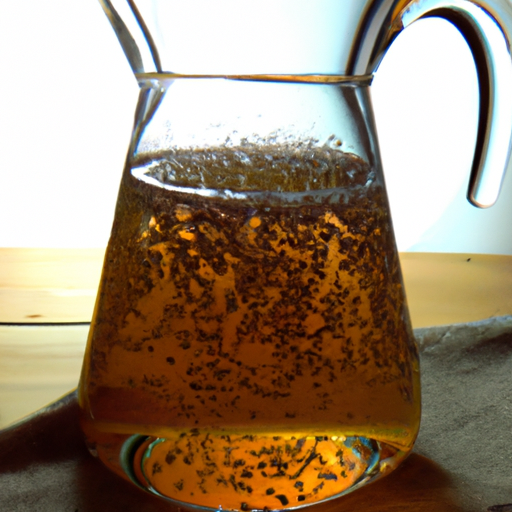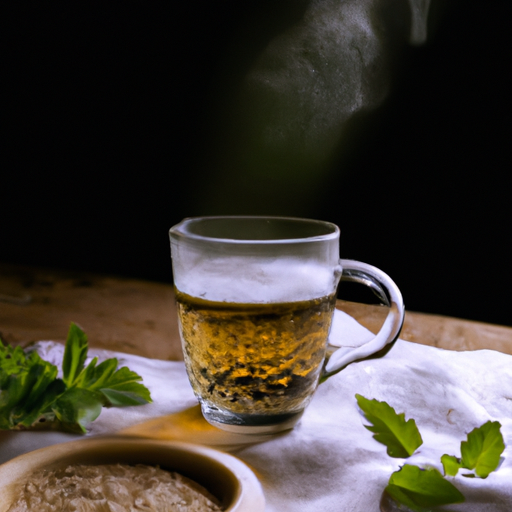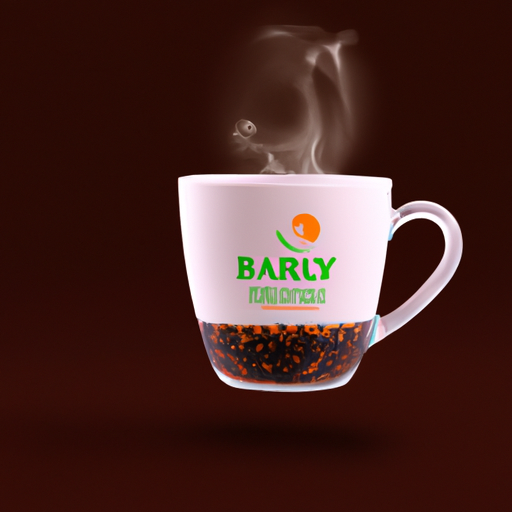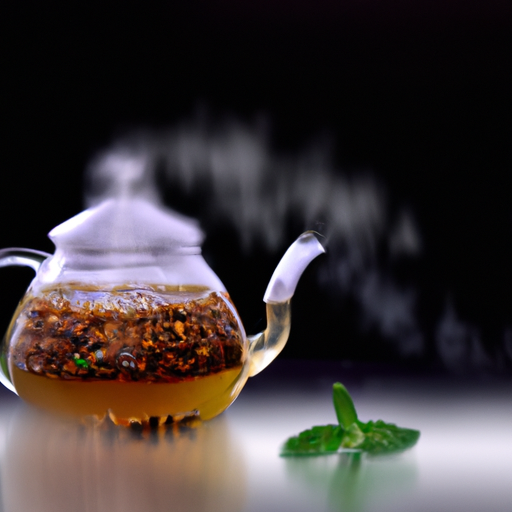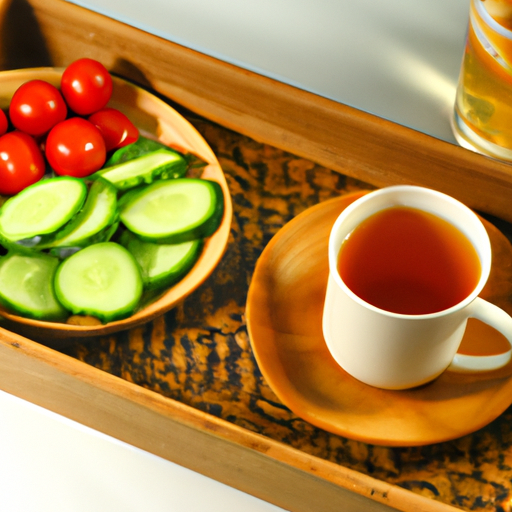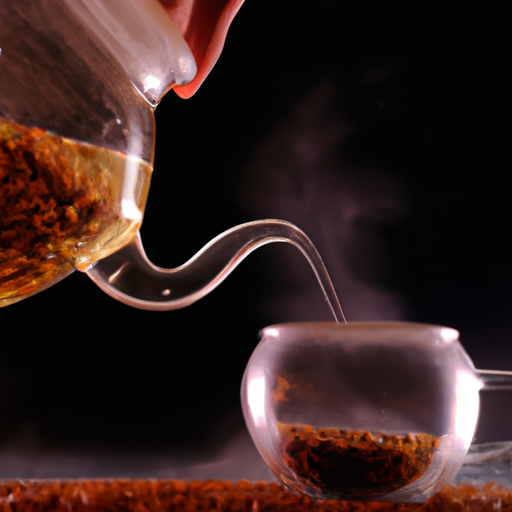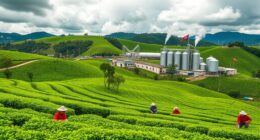In the process of making barley tea, there’s an aspect that frequently surprises individuals: the formation of bubbles. As someone who regularly enjoys barley tea, I’ve experienced numerous instances of bubbles appearing and have also come across several myths about why they show up in the tea.
In this article, I aim to dive deeper into the science behind bubble formation in barley tea and explore the impact they have on the tea’s quality. Barley tea, also known as mugicha in Japanese, is a popular drink in many Asian countries due to its refreshing taste and numerous health benefits.
However, despite its widespread consumption, there is little information available on the formation of bubbles when brewing the tea. Through research and personal experience, I have come to learn that there are various factors that contribute to bubble formation and that they can greatly affect the taste and appearance of the tea.
So, if you’re a barley tea lover or simply curious about the science of bubble formation, keep reading to learn more.
Key Takeaways
- Bubble formation in barley tea is a natural process called nucleation, which can affect its taste and quality.
- The size and persistence of bubbles depend on temperature, surface tension, and size of grain particles, and excessive bubbles can make the tea taste flat, stale, bitter, and unpleasant.
- Cold water, adding salt, and proper stirring techniques can reduce bubble formation and result in a more refreshing and crisp taste.
- Proper brewing techniques, such as controlling the temperature and steeping time, can result in a lighter, sweeter, stronger, bolder, or unique flavor, and adding mint leaves, lemon slices, or honey can give a refreshing twist to the tea.
Overview of Barley Tea and its Popularity
Barley tea, loved for its nutty taste and health benefits, has gained popularity in recent years. It’s made by roasting barley grains and steeping them in hot water. This tea has been a favorite beverage in many cultures for centuries.
In Japan, it’s known as mugicha and is often consumed during the hot summer months as a refreshing drink. Barley tea has a rich history and cultural significance. It was first introduced in China during the Tang Dynasty and was then brought to Japan in the 8th century.
In Japan, it has become a staple beverage in households and is commonly served in restaurants. It’s also popular in Korea, where it’s known as boricha, and in other parts of Asia. The popularity of barley tea can be attributed to its many health benefits.
It’s caffeine-free and low in calories, making it a great alternative to sugary drinks. It also contains antioxidants and has been found to aid in digestion and reduce inflammation. However, one common issue when making barley tea is the formation of bubbles. Let’s explore the science behind this phenomenon.
The Science Behind Bubble Formation
As you pour hot water over the grains, you may notice tiny pockets of air rising to the surface, creating a mesmerizing dance of fizzling activity. This is due to a process called nucleation, where dissolved gases in the water are released from the grain’s surface. These gases are then trapped within the water, forming bubbles that rise to the surface.
The size and persistence of these bubbles depend on several factors, including the temperature of the water, the surface tension of the liquid, and the size of the grain particles. Higher temperatures and lower surface tensions result in larger and more persistent bubbles, as more gas is released and trapped within the water. Additionally, smaller grain particles provide more nucleation sites, leading to more bubbles and a more effervescent tea.
Understanding the science behind bubble formation in barley tea can help to enhance the overall experience of drinking this popular beverage. By adjusting the temperature and grain size, one can control the size and persistence of the bubbles, leading to a more personalized and enjoyable drinking experience.
In the next section, we’ll explore the various factors that can impact bubble formation in more detail.
Factors Affecting Bubble Formation
To get the most out of your homemade barley tea, you’ll want to pay attention to a few key factors that can impact the effervescence and overall flavor of your tea. Bubble size is one of the most important factors to consider. Large bubbles tend to be less desirable, as they can make the tea taste flat and lose its effervescence quickly. On the other hand, smaller bubbles are more desirable, as they help to maintain the effervescence and keep the tea tasting fresh.
Another important factor to consider is the brewing temperature. The temperature at which you brew your barley tea can have a significant impact on the size and number of bubbles that form. If the temperature is too high, the bubbles may be large and the tea may lose its effervescence quickly. If the temperature is too low, the bubbles may be too small and the tea may not have enough effervescence. Therefore, it’s important to find the right brewing temperature to achieve the desired bubble size and effervescence.
To achieve the best possible effervescence and flavor in your homemade barley tea, it’s important to pay attention to the factors that impact bubble formation, including bubble size and brewing temperature. By finding the right balance between these factors, you can ensure that your tea has the perfect amount of effervescence and maintains its freshness for longer.
In the next section, we’ll discuss the impact of bubbles on tea quality and how to use this information to improve your brewing process.
Impact of Bubbles on Tea Quality
Achieving the perfect balance of effervescence and flavor in your homemade barley tea can be a challenge. Understanding the impact of bubbles on tea quality is crucial in improving your brewing process and enjoying a refreshing drink. Bubble size and lifespan are two key factors that can affect the overall quality of your barley tea.
Bubble size can have a significant impact on the tea’s overall flavor. Larger bubbles tend to release more gas, which can alter the taste and aroma of the tea. Smaller bubbles, on the other hand, provide a more delicate effervescence that can enhance the tea’s natural flavor. It’s important to note that bubble size can be affected by several factors, including the temperature of the water, the steeping time, and the amount of tea used.
Bubble lifespan is another critical factor that can impact the quality of your barley tea. Shorter-lived bubbles may provide a more refreshing and crisp taste, while longer-lived bubbles can make the tea feel flat and stale. By understanding the factors that affect bubble lifespan, such as the tea’s acidity level and the presence of certain minerals in the water, you can create a more consistent and enjoyable brewing experience. In the next section, we’ll explore common misconceptions about bubbles in barley tea and how to avoid them.
Table:
| Bubble Size | Factors Affecting Bubble Size |
|---|---|
| Larger Bubbles | High water temperature, longer steeping time, more tea used |
| Smaller Bubbles | Lower water temperature, shorter steeping time, less tea used |
| Bubble Lifespan | Factors Affecting Bubble Lifespan |
|---|---|
| Shorter-Lived Bubbles | Higher tea acidity, lower mineral content in water |
| Longer-Lived Bubbles | Lower tea acidity, higher mineral content in water |
Understanding the impact of bubble size and lifespan on barley tea quality can help you achieve the perfect balance of effervescence and flavor. Now, let’s explore some common misconceptions about bubbles in barley tea and how to avoid them.
Common Misconceptions about Bubbles in Barley Tea
You might think that all the foamy goodness on top of your cup of homemade barley tea is a sign of quality, but there are some common misconceptions about the bubbles in barley tea that you should be aware of.
One of the most common myths is that more bubbles mean better tea. However, this is not true as excessive bubbles can actually be an indication of poor tea quality. When barley tea is brewed at high temperatures, it can cause the release of tannins and other compounds that lead to excess bubbles.
Another misconception about bubbles in barley tea is that they are harmless and do not affect the taste of the tea. This is also not true as excessive bubbles can actually cause the tea to taste bitter and unpleasant. Additionally, bubbles can also interfere with the aroma and flavor of the tea, making it less enjoyable to drink.
Therefore, it is important to prevent excessive bubble formation when making barley tea.
To prevent excessive bubble formation in barley tea, there are several tips that you can follow. One of the most effective ways to reduce bubbles is to use cold water when brewing the tea. You can also try adding a small amount of salt to the water before brewing to help reduce the amount of bubbles that form. Additionally, it is important to avoid overbrewing the tea, as this can also lead to excessive bubbles.
By following these tips, you can ensure that your barley tea is of the highest quality and free from excessive bubbles.
Tips for Reducing Bubble Formation
If you want to elevate your enjoyment of homemade barley tea, consider implementing these helpful techniques to enhance its taste and aroma.
One of the most effective ways to reduce bubble formation is by using proper stirring techniques. When boiling the barley tea, gently stir the water and tea leaves or powder in a circular motion. This will help to evenly distribute the flavor and prevent the tea from boiling over, which can lead to more bubbles.
Temperature control is another essential factor in reducing bubble formation. When brewing barley tea, it’s important to use a medium to low heat setting to avoid overheating the water. This will slow down the rate of evaporation and help to keep the bubbles at bay. Additionally, allowing the tea to simmer for too long can cause the liquid to become too concentrated, resulting in more bubbles.
Incorporating these tips into your barley tea-making process can greatly enhance the overall flavor and aroma of your homemade brew. Remember to gently stir the water and tea leaves or powder in a circular motion while using a medium to low heat setting. By doing so, you’ll create a smooth, delicious barley tea with fewer bubbles.
Next, we’ll explore alternative brewing methods that can further enhance your tea-drinking experience.
Alternative Brewing Methods
Now let’s try out some fun and unique ways to brew your favorite grain-based beverage. While traditional brewing methods involve boiling barley in water, there are alternative methods that can enhance the flavor profiles of your barley tea.
One such method is cold brewing, which involves steeping barley in cold water for several hours. This method results in a lighter and sweeter flavor, as the cold water extracts fewer tannins from the barley.
Another alternative brewing method is using a French press. This brewing equipment allows you to control the strength of your barley tea by adjusting the steeping time. The French press also traps the barley sediment, resulting in a clearer and smoother texture. This method is perfect if you want a stronger and bolder flavor, as the French press extracts more flavor compounds from the barley.
Incorporating different brewing methods can bring out unique flavor profiles in your barley tea. However, these methods are just the beginning of the variations of barley tea you can try. So, let’s explore more ways to enjoy this beloved beverage.
Variations of Barley Tea
Holy smokes, there are so many mind-blowing ways to switch up your barley brews and give your taste buds a rollercoaster ride. One of the most exciting aspects of making barley tea is the ability to create unique flavor profiles by adding different ingredients.
For example, you can add mint leaves, lemon slices, or honey to your barley tea to give it a refreshing twist. You can also experiment with different brewing times to bring out different flavors in the barley. If you prefer a stronger, more robust flavor, try steeping your barley tea for a longer period of time. On the other hand, if you want a milder taste, you can reduce the brewing time.
Another variation you can try is using different types of barley, such as roasted barley or pearl barley. Roasted barley will give your tea a nutty, toasty flavor, while pearl barley will have a more neutral taste. By playing around with these variables, you can create a range of delicious and unique barley tea drinks.
In addition to being a tasty beverage, barley tea also has many health benefits. It is a natural diuretic, which means it can help flush out excess fluids from the body. It is also a good source of antioxidants, which can help protect against cell damage and reduce the risk of chronic diseases.
With all these benefits, there are plenty of reasons to try out different variations of barley tea and find the perfect one for you.
Health Benefits of Barley Tea
The health benefits of barley tea shouldn’t be overlooked. Here are four reasons why you should incorporate it into your routine:
-
Barley tea can help with weight loss. It contains beta-glucan fiber, which can reduce appetite and promote feelings of fullness. It’s also low in calories and a great alternative to sugary drinks.
-
Barley tea can improve digestion. The fiber in barley tea can regulate bowel movements and promote healthy gut bacteria. This can reduce digestive issues like bloating, constipation, and diarrhea.
-
Barley tea can regulate blood sugar levels. Beta-glucan can slow down glucose absorption, preventing spikes and crashes in blood sugar. This is particularly beneficial for those with diabetes or at risk of developing it.
-
Barley tea provides antioxidants. It contains phenolic acids and flavonoids, which have antioxidant properties. Antioxidants protect cells from free radical damage, reducing the risk of chronic diseases like heart disease and cancer.
Incorporating barley tea into your routine is a simple and effective way to promote overall health and well-being. With its numerous benefits, it’s no wonder barley tea has been a popular beverage for centuries.
Frequently Asked Questions
What are some common causes of bubbles in barley tea?
When it comes to brewing tea, there are several factors that can affect the formation of bubbles. Boiling temperature and brewing time are two critical factors that can cause bubbles to form in tea.
However, it’s important to note that bubble formation in barley tea is not unique to this particular type of tea. Comparing bubble formation in barley tea to other types of tea, such as green tea or black tea, shows that it’s a common occurrence across different tea varieties.
Therefore, if you notice bubbles forming in your barley tea, it’s likely due to these factors and not indicative of any quality or brewing issues.
Can excessive bubble formation have any negative impact on the taste of barley tea?
Excessive bubble formation during the brewing process of barley tea can potentially have negative effects on the aroma and taste of the final product. This is because bubbles can cause the tea to become over-aerated, which can lead to a loss of delicate flavors and aromas.
To avoid this, it’s important to use proper brewing techniques, such as using the correct water temperature and steeping time, as well as controlling the amount of tea leaves used. Additionally, minimizing agitation when brewing can also help to prevent excessive bubble formation and preserve the quality of the tea.
Are there any health concerns associated with bubbles in barley tea?
When it comes to the health concerns associated with bubbles in barley tea, there are no studies or evidence to suggest any negative impact on one’s health.
However, it’s important to note that excessive bubble formation may indicate impurities or low-quality ingredients used in the tea.
Additionally, the myth that more bubbles equals higher quality is just that – a myth.
Quality of barley tea should be determined by the taste, aroma, and appearance, rather than the amount of bubbles.
Overall, there’s no need to worry about the health risks of bubbles in barley tea, but it’s important to pay attention to the quality of ingredients used.
Can the type of barley used affect bubble formation in the tea?
Barley varieties and brewing methods can indeed affect the bubble formation in barley tea. Different types of barley have varying amounts of starch and protein, which can impact the brewing process and ultimately affect the amount of bubbles that form.
Additionally, the brewing method can also play a role in bubble formation, as certain temperatures and steeping times can lead to more or less foaming. However, it’s important to note that the presence of bubbles in barley tea doesn’t necessarily indicate any health concerns. It’s simply a natural occurrence that can vary based on the specific type of barley and brewing method used.
Are there any cultural or historical significance to the appearance of bubbles in barley tea?
When it comes to barley tea, there’s certainly cultural symbolism and significance attached to its consumption.
In some Asian cultures, barley tea is considered a traditional beverage, served both hot and cold, that’s believed to help with digestion and overall health.
The tea is often prepared using traditional brewing methods and is commonly consumed during meals or as a refreshing drink on a hot day.
While the appearance of bubbles in barley tea may not hold any particular cultural or historical significance, the tea itself remains an important part of many cultural traditions.
Conclusion
In conclusion, as someone who enjoys a good cup of barley tea, I can say that the issue of bubbles is a common but often misunderstood one. It’s important to understand the science behind bubble formation and the factors that can affect it, as well as the impact that bubbles can have on the overall quality of the tea.
While some may see bubbles as a sign of poor brewing technique, it’s important to remember that they can also be a natural occurrence that doesn’t necessarily indicate a problem. That being said, if you’re someone who wants to reduce the amount of bubbles in your barley tea, there are a few tips you can try.
And if you’re feeling adventurous, there are also alternative brewing methods and variations of barley tea that you can explore. Ultimately, it’s up to you to decide what works best for you and your preferences. But regardless of whether or not you’re a bubble enthusiast, there’s no denying the many health benefits that barley tea has to offer.

